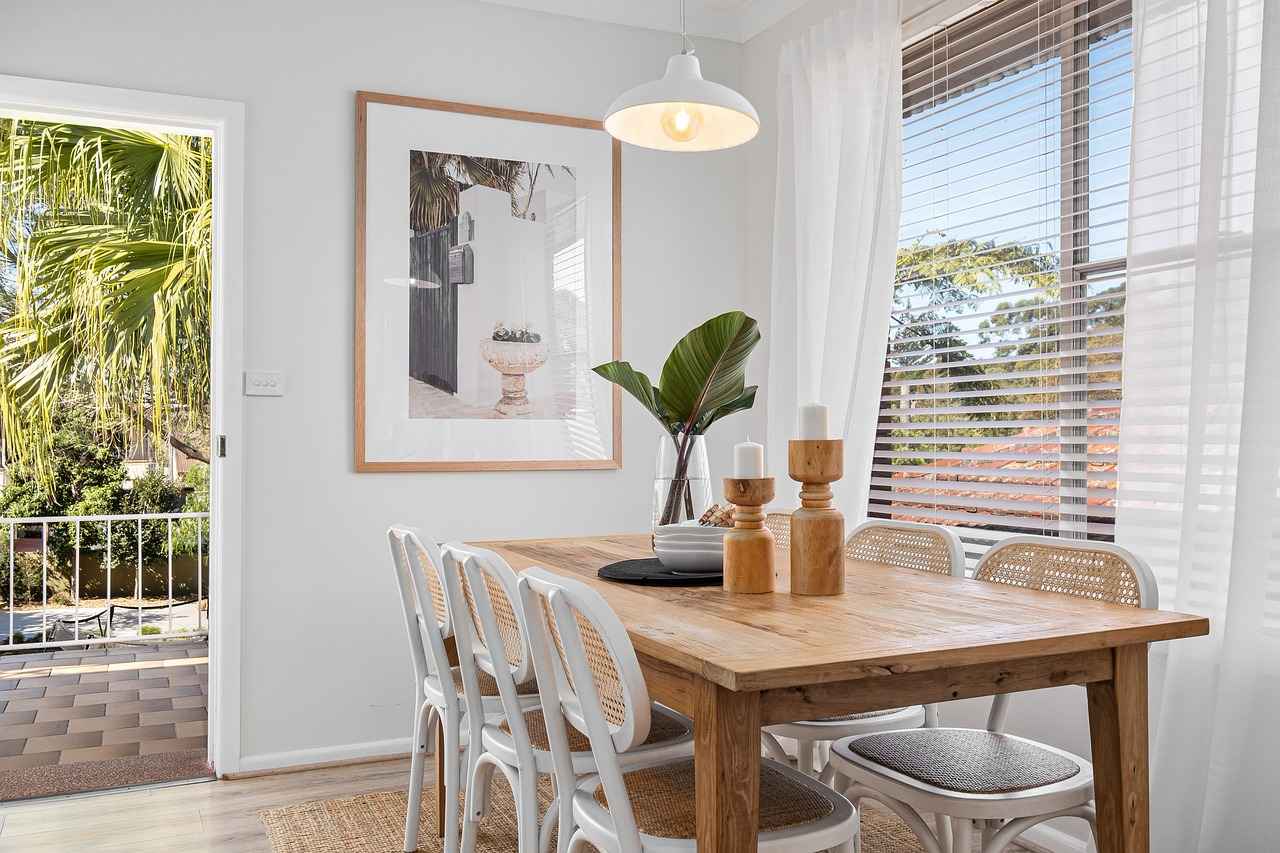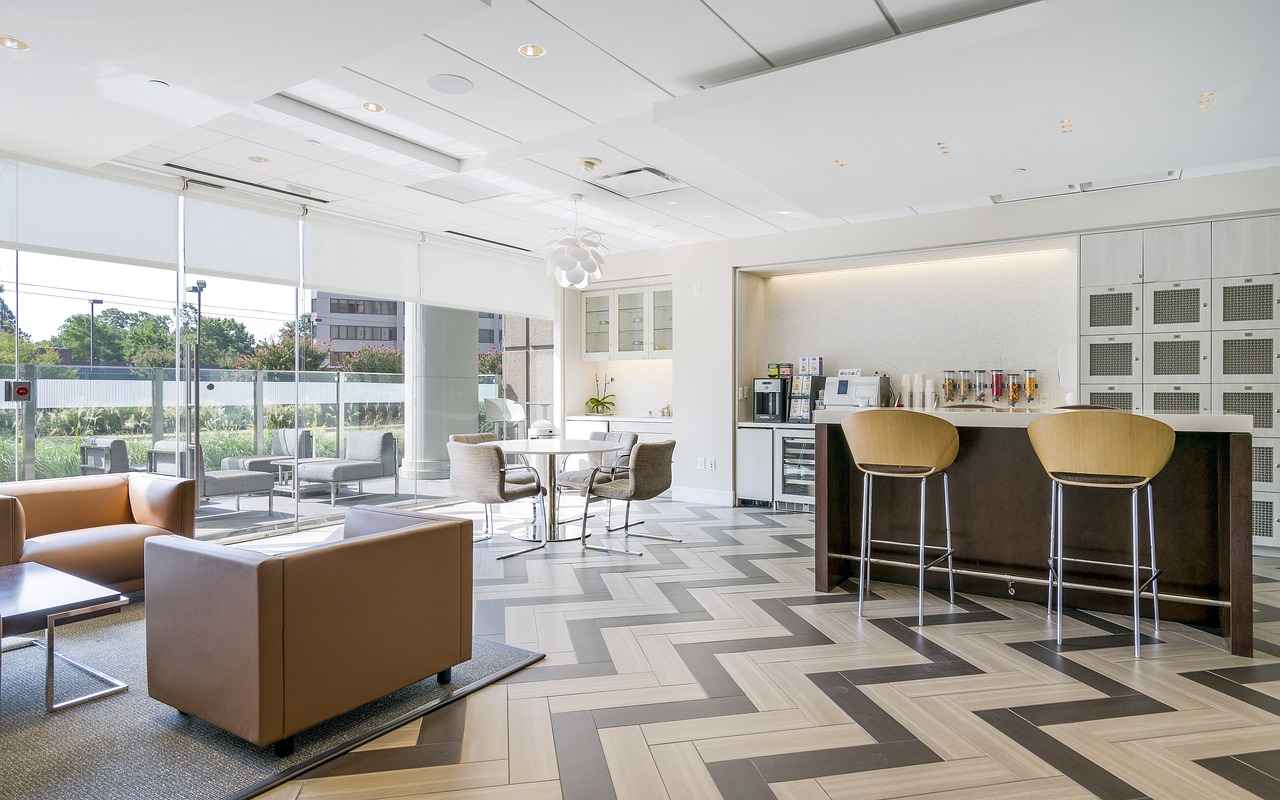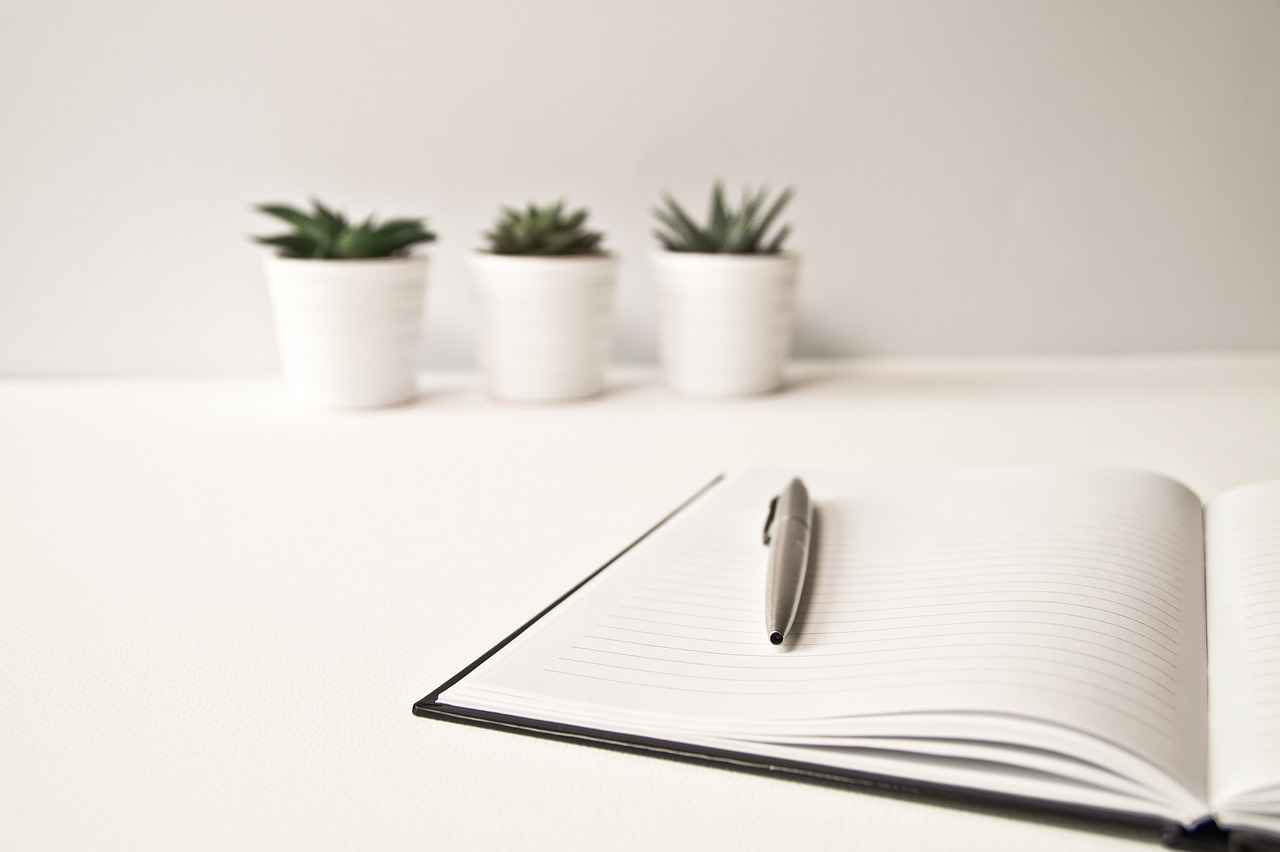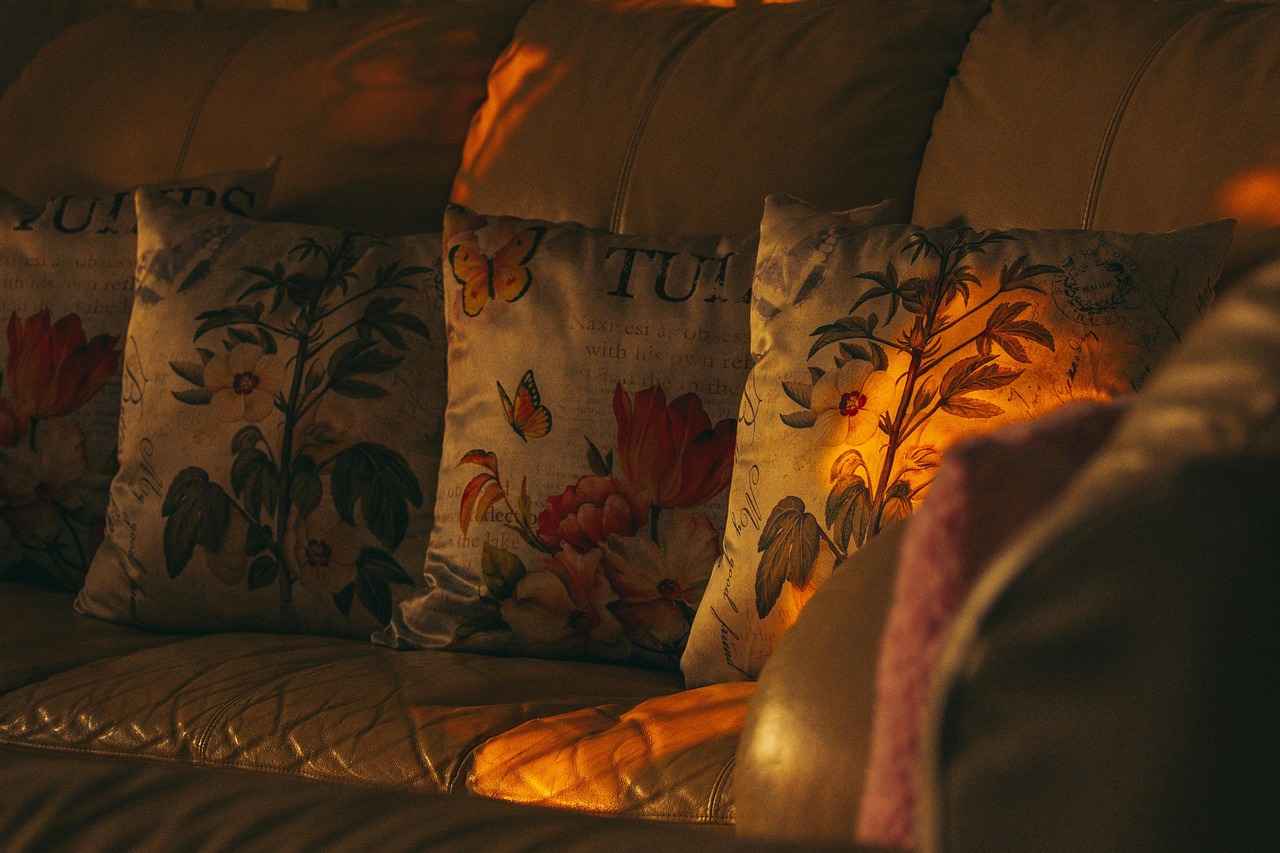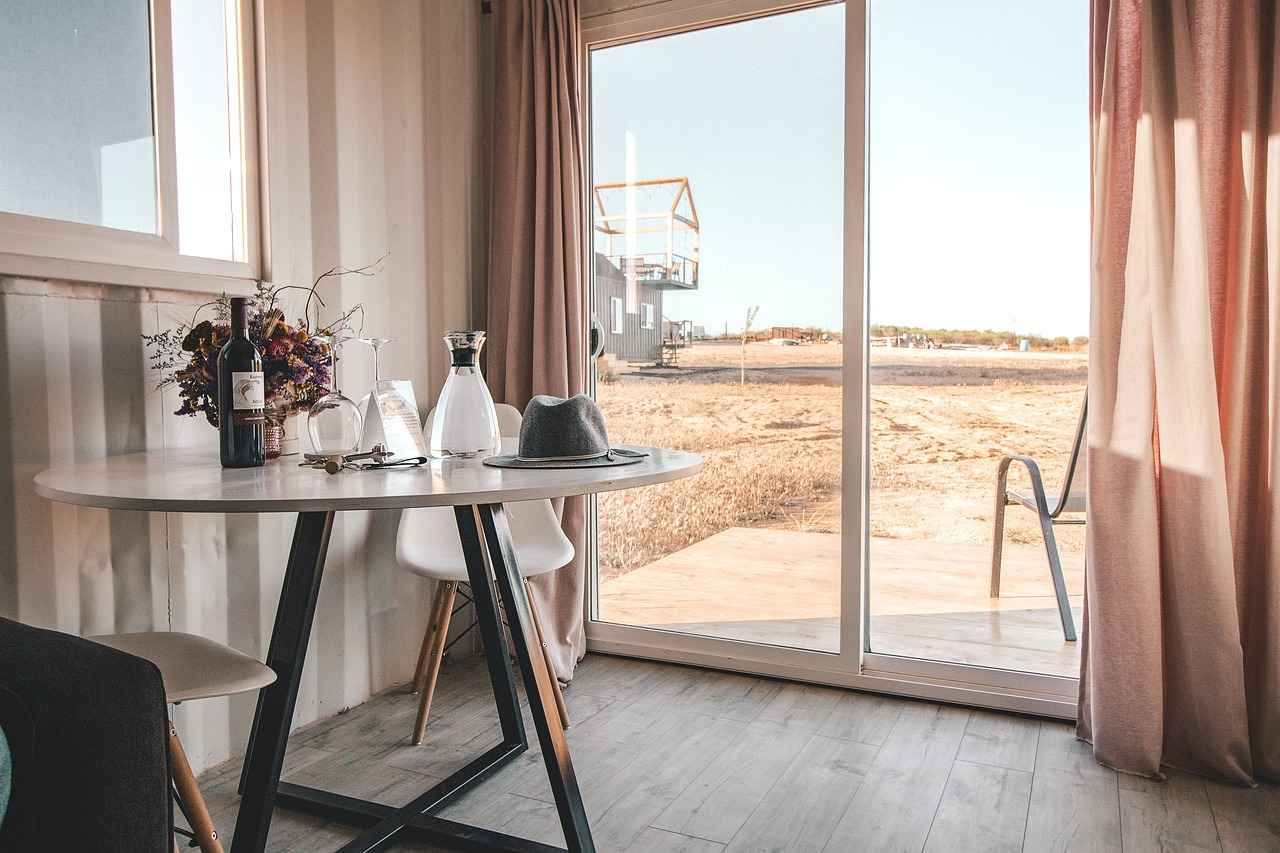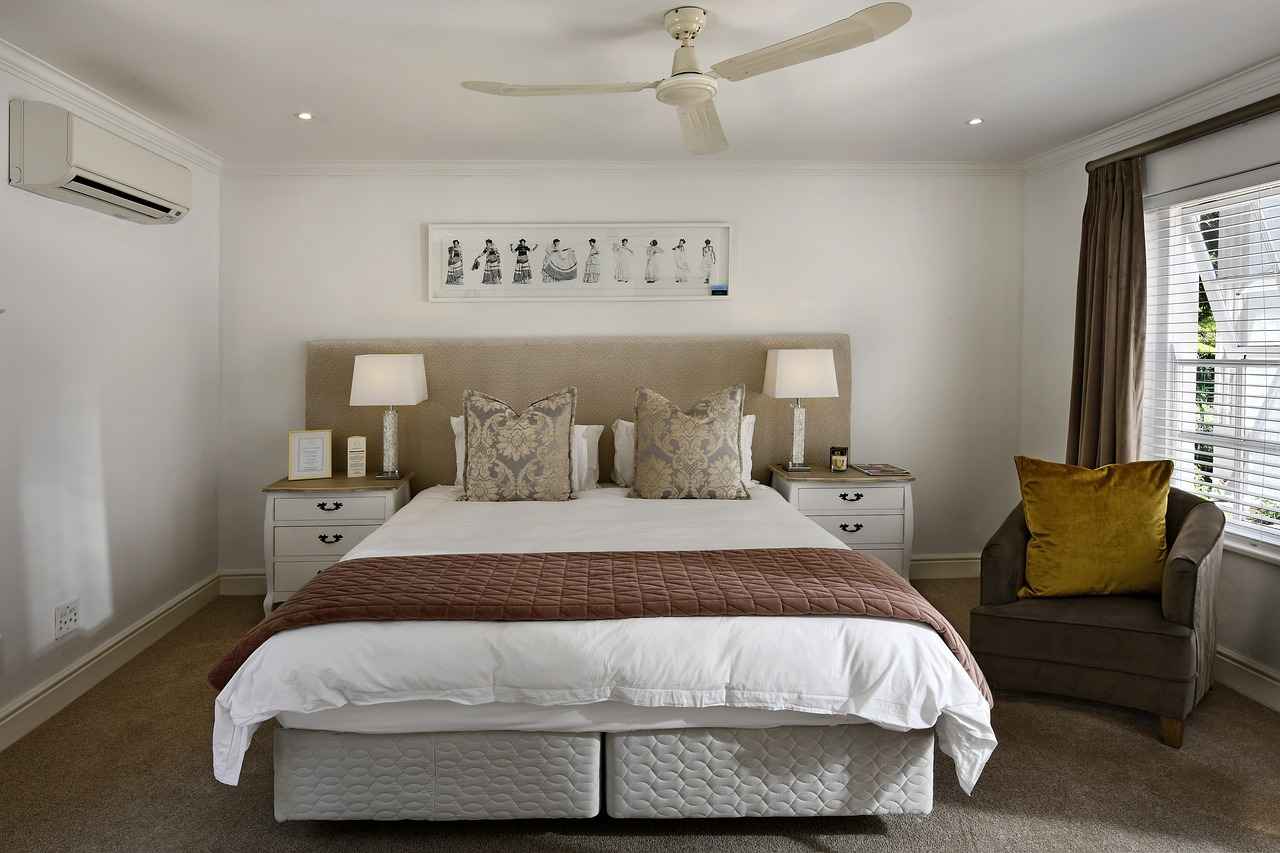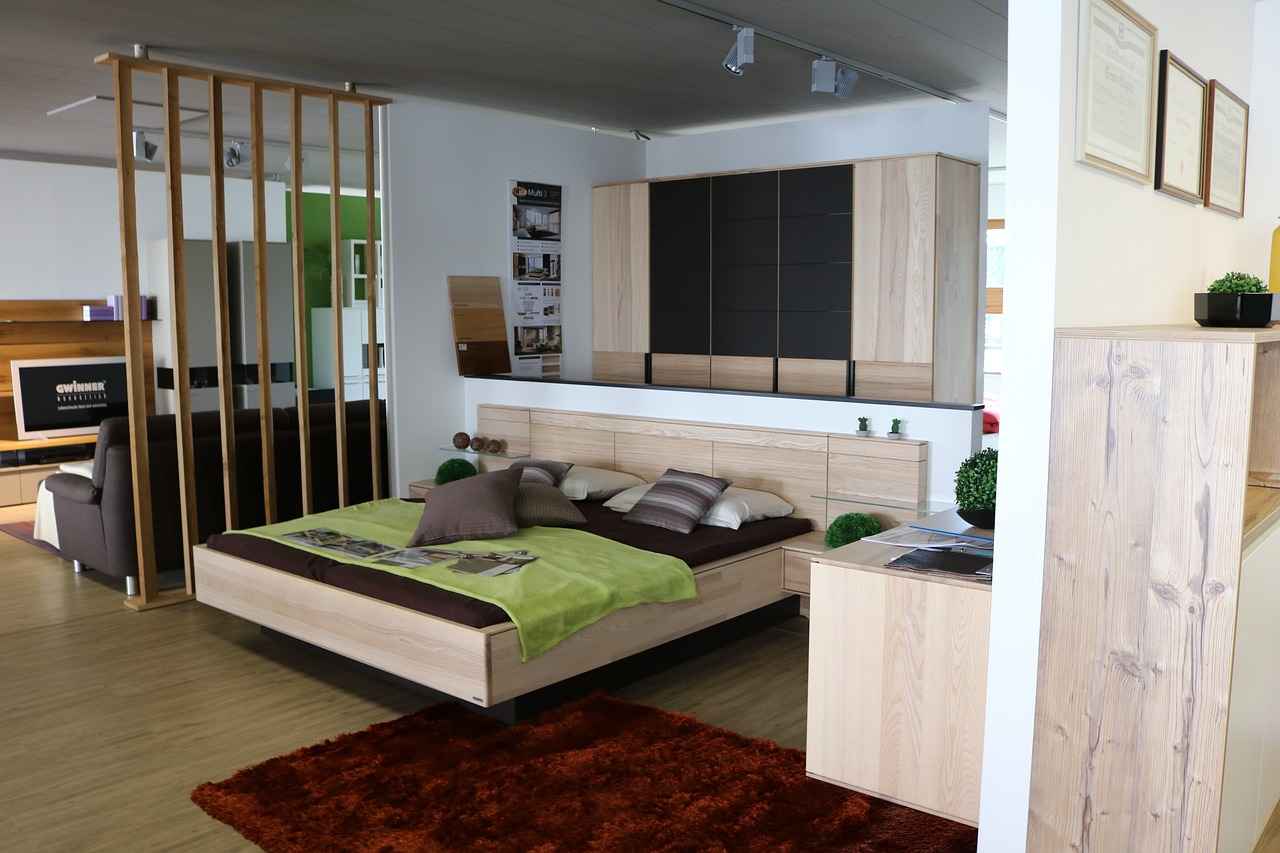This article provides a step-by-step guide to creating a DIY privacy screen for your open bedroom, utilizing creative and resourceful methods without the need for tools.
A privacy screen can significantly enhance your bedroom’s comfort and intimacy. It provides a sense of separation in open spaces, making your sleeping area feel more personal. Additionally, a well-placed privacy screen can serve as a decorative element, contributing to the overall aesthetic of your bedroom.
Creating a privacy screen requires minimal materials, which can often be found around the house. Common items include:
- Fabric: Use old curtains, bed sheets, or any fabric that suits your style.
- Decorative Screens: Repurpose folding screens or room dividers.
- Plants: Tall plants can create a natural barrier.
Selecting the optimal location for your privacy screen is crucial for maximizing both functionality and aesthetics. Consider placing it:
- Near your bed for immediate privacy.
- Adjacent to windows for light control.
- In a corner to create a cozy nook.
Fabric is an excellent choice for a privacy screen, offering versatility in color and texture. It can be easily hung or draped without tools, making it a practical option.
Choosing the right fabric can make a significant difference. Consider the following options:
- Lightweight, sheer materials: These create a soft barrier while allowing light to filter through.
- Heavier fabrics: These offer more concealment and can block out light entirely.
There are various methods for hanging fabric without tools:
- Adhesive hooks: These can easily stick to walls or furniture.
- Tension rods: Ideal for creating a temporary curtain effect.
- Draping: Simply drape fabric over furniture like a bookshelf or a screen.
If fabric isn’t your style, consider alternative options:
- Folding screens: Portable and easy to set up, allowing for flexible arrangements.
- Room dividers: These can be decorative and functional.
- Tall plants: Create a natural barrier while adding greenery to your space.
Folding screens are versatile and can be moved around easily. They allow for flexible arrangements in your open bedroom while adding a decorative touch that can complement your existing decor.
Using tall plants or a vertical garden can provide both privacy and a refreshing aesthetic. Plants can make your bedroom feel more inviting and serene, while also improving air quality.
Enhancing your privacy screen with decorations can elevate its visual appeal. Consider:
- Fairy lights: Add a magical touch to your fabric or screen.
- Artwork: Hang small frames or pictures to personalize your space.
- Personal touches: Incorporate items that reflect your style.
Regular maintenance ensures your privacy screen remains functional and visually appealing. This includes:
- Cleaning fabric: Regularly wash or vacuum to keep it fresh.
- Watering plants: Ensure they thrive and maintain their privacy function.
- Checking for wear: Inspect your screen for any damage or fading.
Flexibility is key when it comes to privacy screens. Changing your setup periodically can refresh your bedroom’s look and feel, adapting to your evolving needs. Consider rotating the fabrics or rearranging the plants to keep the space dynamic.
Exploring design blogs, home improvement websites, and social media platforms can provide inspiration for creating a unique privacy screen that fits your personal style. Don’t hesitate to gather ideas from various sources to create a space that feels uniquely yours.

Why Use a Privacy Screen in an Open Bedroom?
In today’s modern living spaces, open floor plans have become increasingly popular. While they offer a sense of spaciousness and connectivity, they can also lead to a lack of privacy in personal spaces like bedrooms. This is where a privacy screen comes into play. Not only does it provide a practical solution for creating a sense of separation, but it also enhances the comfort and intimacy of your bedroom environment.
A privacy screen can significantly transform your open bedroom into a more personal sanctuary. Here are several reasons why incorporating a privacy screen is beneficial:
- Enhanced Comfort: A privacy screen allows you to create a cozy nook within your bedroom. It can help you feel more at ease, especially if you share your living space with others.
- Improved Intimacy: By visually separating areas, a privacy screen can foster a more intimate atmosphere, ideal for couples or individuals seeking a peaceful retreat.
- Decorative Element: Beyond functionality, privacy screens can serve as a stunning decorative element. With various designs available, they can complement your existing decor and add character to the space.
- Flexible Space Management: In open-concept homes, a privacy screen allows for versatile space management. You can easily reposition it to suit different activities or moods, whether you’re entertaining guests or enjoying a quiet evening.
- Noise Reduction: Some privacy screens, especially those made from denser materials, can help absorb sound, contributing to a quieter environment.
Moreover, a privacy screen can act as a functional divider, creating a designated area for dressing, reading, or relaxation without the need for permanent walls. This flexibility is especially advantageous in smaller living spaces where maximizing every square foot is essential.
Creating your own privacy screen doesn’t require extensive materials or tools. You can use items readily available at home, such as:
- Fabric: Lightweight or heavy fabric can be hung or draped to create a soft barrier.
- Folding Screens: These are portable and can be easily moved around as needed.
- Plants: Tall indoor plants or vertical gardens can offer a natural and aesthetic solution.
Ultimately, the choice of materials depends on your personal style and the level of privacy you wish to achieve.
Selecting the right location for your privacy screen is crucial. Consider the following tips:
- Assess Traffic Flow: Position your screen where it will not obstruct movement through the room.
- Identify Privacy Needs: Determine which areas require more privacy, such as dressing areas or sleeping zones.
- Consider Aesthetics: Ensure that the location enhances the overall look of your bedroom while fulfilling its functional role.
By strategically placing your privacy screen, you can effectively create a more inviting and personal atmosphere in your open bedroom.
Fabric is an excellent choice for creating a privacy screen due to its versatility. You can choose from a wide range of colors, patterns, and textures to match your decor. Additionally, fabric can be easily hung or draped without the need for tools, making it a convenient option for DIY enthusiasts.
If fabric isn’t your preferred choice, there are various alternative options available:
- Folding Screens: These are easy to set up and can be moved as needed.
- Room Dividers: These can serve as more permanent solutions for larger spaces.
- Tall Plants: Incorporating greenery can provide both privacy and a refreshing aesthetic.
Each option has its unique benefits, so consider your space and personal preferences when making a selection.
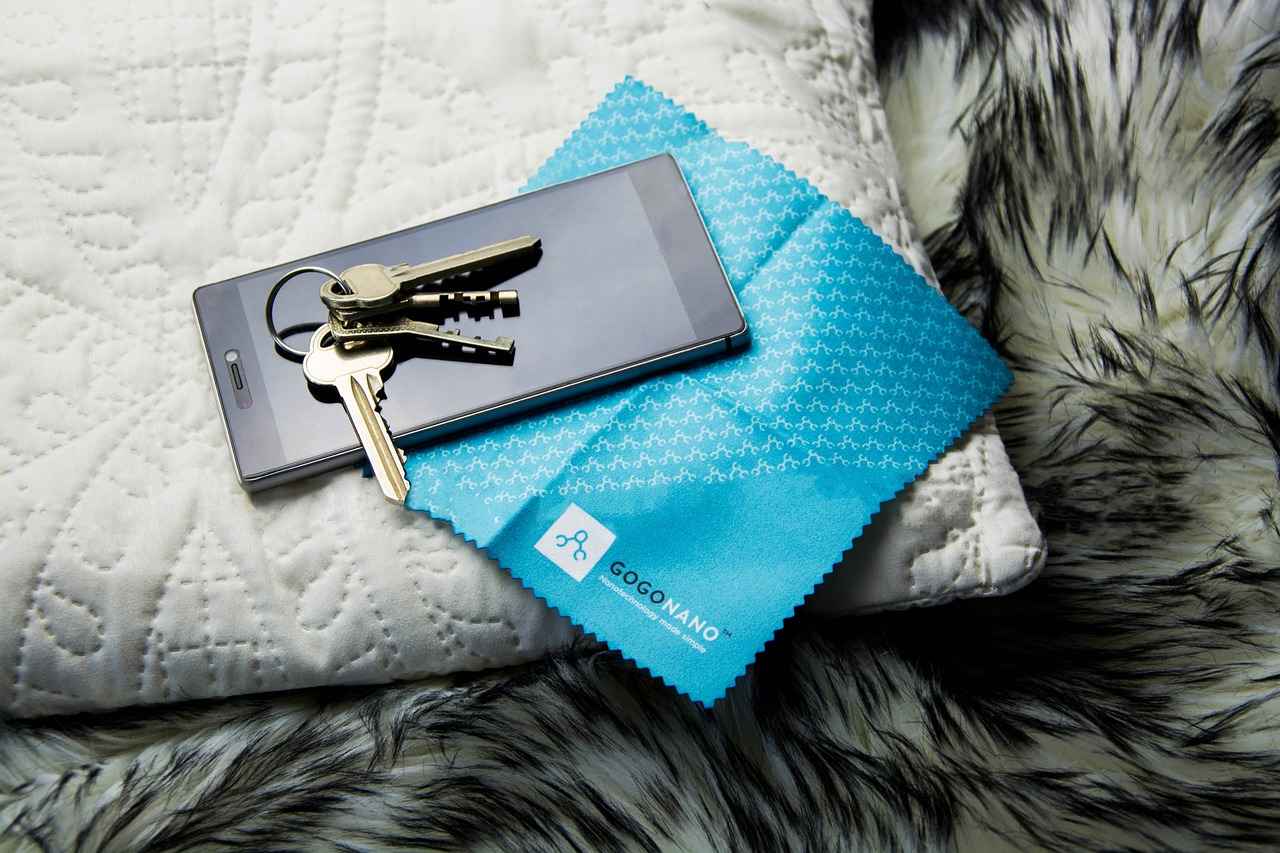
What Materials Are Needed for a DIY Privacy Screen?
Creating a DIY privacy screen for your open bedroom can be an exciting and fulfilling project. Not only does it enhance your space, but it also provides a sense of seclusion without the need for permanent installations or expensive materials. In this section, we will explore the various materials you can utilize to construct an effective privacy screen.
Creating a privacy screen requires minimal materials, which can often be found around the house. Here are some common items you can use:
- Fabric: One of the most versatile options, fabric can be used in various ways to create a soft and inviting barrier. You can choose from sheer curtains, heavy drapes, or even decorative throws. The choice of fabric will depend on the level of privacy you desire and the aesthetic you want to achieve.
- Decorative Screens: Folding screens or room dividers can be an excellent choice for a privacy screen. They come in various designs and can be easily moved around to suit your needs. Look for screens that complement your bedroom decor for a cohesive look.
- Plants: Incorporating tall plants or a vertical garden can provide both privacy and a refreshing aesthetic. Plants like fiddle leaf figs or snake plants can act as natural barriers while improving air quality and adding a touch of nature to your space.
- Furniture: You can creatively use existing furniture, such as bookshelves or tall cabinets, to create a makeshift privacy screen. Positioning these items strategically can help delineate your sleeping area from the rest of the room.
- Rope or String Lights: If you want to add a whimsical touch to your privacy screen, consider using rope or string lights. You can hang them alongside fabric or around plants to create a cozy atmosphere while maintaining privacy.
When selecting materials for your privacy screen, consider the following:
- Style: Choose materials that reflect your personal style and match your bedroom decor. A cohesive look will enhance the overall aesthetic of your space.
- Functionality: Think about how much privacy you need. If you want a complete barrier, opt for heavier fabrics or solid screens. For a softer look, sheer fabrics or plants may suffice.
- Budget: Since you can use materials you already have at home, consider what you can repurpose before buying new items. This approach not only saves money but also reduces waste.
Once you have gathered your materials, assembling your privacy screen can be done in various ways:
- Hanging Fabric: Use adhesive hooks or tension rods to hang fabric from the ceiling or walls. This method allows for easy removal and adjustment.
- Arranging Plants: Position tall plants in a line or cluster them in corners to create a natural barrier. This not only provides privacy but also adds life to your space.
- Setting Up Screens: If using a folding screen, simply unfold it and place it where needed. You can easily move it around as your needs change.
In conclusion, creating a DIY privacy screen can be a simple yet effective way to enhance your open bedroom. By using materials that are easily accessible and aligning them with your personal style, you can achieve both functionality and aesthetic appeal in your space.
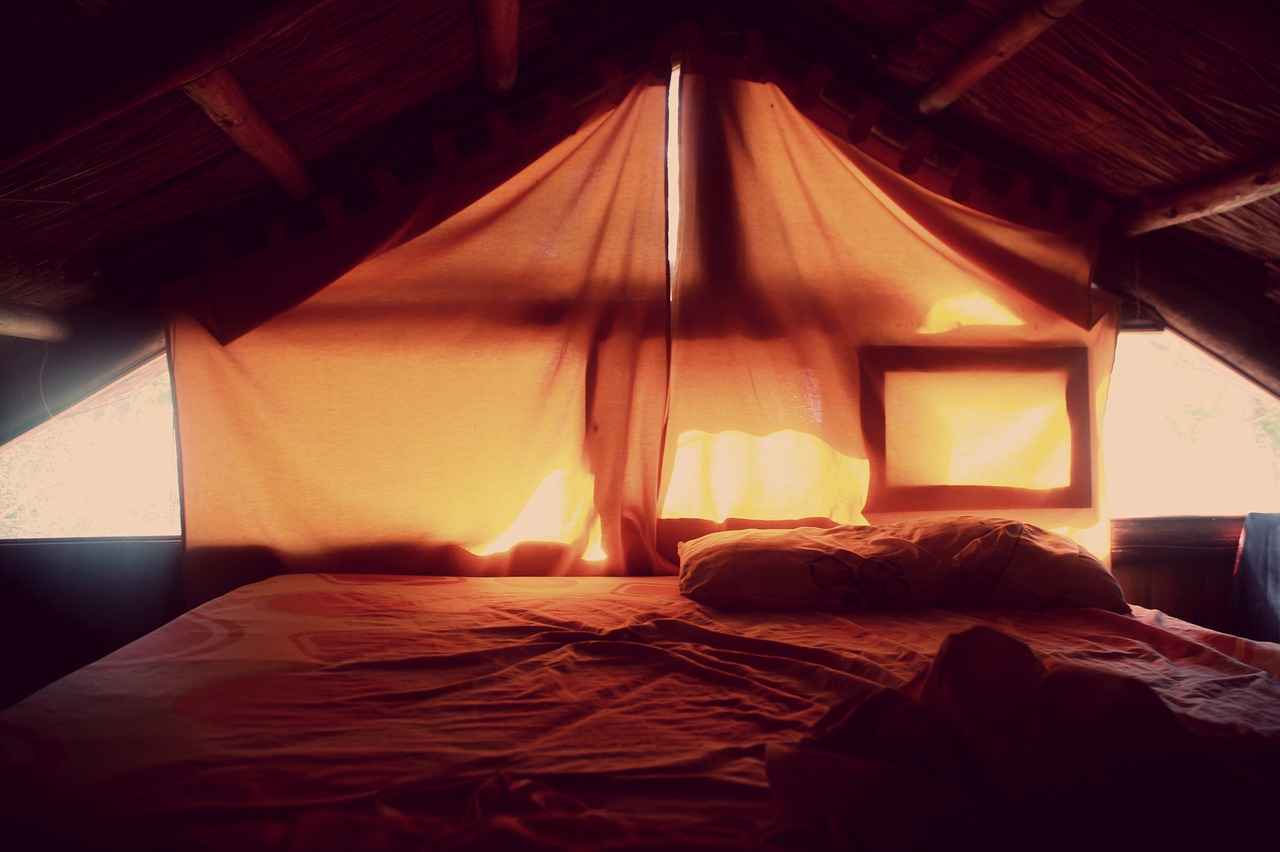
How to Choose the Right Location for Your Privacy Screen?
When it comes to designing an open bedroom layout, one of the most important aspects to consider is the placement of a privacy screen. Selecting the optimal location for your privacy screen is crucial for maximizing both functionality and aesthetics. A well-placed privacy screen can create a cozy nook, enhance your room’s design, and provide the necessary separation for personal space.
- Assess Your Space: Begin by evaluating the layout of your bedroom. Identify areas where you feel you need more privacy, such as near the bed or dressing area. Consider how the screen will interact with existing furniture and architectural features.
- Consider Natural Light: The placement of your privacy screen can impact the flow of natural light in the room. Positioning it in a way that allows light to filter through can maintain an airy feel while still providing privacy. For example, a sheer fabric screen can offer coverage without completely blocking light.
- Think About Functionality: Consider how you intend to use the space. If you want to create a dressing area, place the screen near your closet or vanity. If the goal is to separate the sleeping area from a workspace, position the screen accordingly to delineate those spaces effectively.
- Enhance Aesthetics: Your privacy screen should not only serve a functional purpose but also complement your bedroom’s decor. Choose a location that enhances the overall aesthetic. For instance, a decorative folding screen can become a statement piece when placed against a neutral wall.
- Mobility and Flexibility: If you prefer a more dynamic setup, consider using a portable privacy screen. This allows you to change the location based on your needs, whether you want to create a temporary barrier during gatherings or adjust the layout for different seasonal decor.
Additionally, the material of your privacy screen plays a significant role in its effectiveness and visual appeal. For instance, a tall plant can create a natural barrier while adding a touch of greenery, whereas a fabric screen can introduce color and texture. Whichever material you choose, ensure it aligns with the overall theme of your bedroom.
Furthermore, think about the height of your privacy screen. A taller screen can provide more coverage and a greater sense of enclosure, while a shorter screen can maintain an open feel. Balance is key; you want to ensure that the screen serves its purpose without overwhelming the space.
Ultimately, the right location for your privacy screen should reflect your personal style and practical needs. By carefully considering these factors, you can create a space that feels both intimate and inviting, allowing you to enjoy the benefits of privacy without sacrificing the open feel of your bedroom.

Can You Use Fabric as a Privacy Screen?
When it comes to creating a sense of privacy in an open bedroom, fabric stands out as an excellent choice for a privacy screen. Its versatility in color and texture allows you to customize your space according to your personal style. Moreover, fabric is incredibly easy to hang or drape without the need for tools, making it a practical option for anyone looking to enhance their living environment.
Fabric offers a unique combination of aesthetics and functionality. It can transform a space by adding warmth and texture, while also providing the necessary privacy that many open bedroom layouts lack. The ability to select from a wide range of fabrics—from sheer curtains that allow light to filter through, to heavier drapes that block out visibility—means you can tailor your privacy screen to suit your specific requirements.
- Sheer Fabrics: Lightweight and airy, these materials can create a soft barrier while still allowing light to enter.
- Heavy Drapes: For those seeking more concealment, thicker fabrics provide a complete visual block.
- Textured Materials: Fabrics with interesting textures can add depth and visual interest to your privacy screen.
One of the best features of using fabric as a privacy screen is the ability to hang it without any tools. Here are some effective methods:
- Adhesive Hooks: These can be easily attached to walls or ceilings and provide a sturdy point to hang your fabric.
- Tension Rods: These can be placed between two walls or inside a window frame, allowing you to slide the fabric open or closed as needed.
- Draping Over Furniture: Simply drape your fabric over a bookshelf or a tall piece of furniture to create an instant privacy barrier.
In addition to functionality, fabric can enhance the overall aesthetic of your bedroom. By choosing the right colors and patterns, you can create a cohesive look that complements your existing decor. For instance, a bold print can serve as a statement piece, while neutral tones can provide a calming backdrop. Additionally, you can embellish your fabric with fairy lights or decorative clips to elevate its visual appeal.
While fabric offers numerous benefits, there are practical considerations to keep in mind:
- Maintenance: Regular cleaning is essential to keep your fabric looking fresh. Depending on the material, you may need to wash or dry clean it periodically.
- Durability: Choose fabrics that can withstand wear and tear, especially if they will be frequently moved or adjusted.
- Light Control: Consider the amount of light you want to filter through the fabric. Sheer fabrics may not provide enough privacy during the day, while heavier options can darken the room.
Customization is key when using fabric as a privacy screen. Consider mixing and matching different fabrics to create a layered look. You can also use fabric paint or stencils to add personal designs or patterns. This not only enhances the visual appeal but also allows you to express your personality in your bedroom space.
In conclusion, using fabric as a privacy screen in an open bedroom is both a practical and stylish option. Its versatility, ease of installation, and potential for customization make it an ideal choice for anyone looking to enhance their personal space.
What Types of Fabric Work Best?
When it comes to creating a privacy screen for your open bedroom, choosing the right fabric is crucial. The fabric not only affects the overall aesthetic of the space but also plays a significant role in the level of privacy you can achieve. Different types of fabric offer varying degrees of light filtration, texture, and opacity. Below, we explore the best types of fabric for your DIY privacy screen.
Sheer fabrics are an excellent choice if you want to maintain a sense of openness while still creating a subtle barrier. These lightweight materials allow natural light to filter through, creating a warm and inviting atmosphere. Examples of sheer fabrics include:
- Organza: A crisp and lightweight fabric that adds a touch of elegance.
- Tulle: Often used in wedding decorations, tulle is soft and airy.
- Voile: This fabric is slightly thicker than tulle but still provides a delicate look.
Using sheer fabrics can create a dreamy effect, perfect for a romantic bedroom setting.
If you prefer a balance between light filtration and privacy, consider medium weight fabrics. These materials offer more concealment while still allowing some light to pass through. Some popular options include:
- Chiffon: Soft and flowing, chiffon drapes beautifully and adds a touch of sophistication.
- Muslin: This natural fabric is breathable and versatile, making it an excellent choice for a variety of styles.
- Linen: Known for its texture and durability, linen provides a casual yet chic look.
Medium weight fabrics can be easily hung or draped, making them practical for DIY projects.
If your primary goal is to create a private sanctuary, then heavy fabrics are the way to go. These materials block out light and sound, offering the most concealment. Some good choices include:
- Velvet: Luxurious and thick, velvet not only provides privacy but also adds a rich texture to your space.
- Denim: A sturdy option that can bring a casual vibe to your bedroom.
- Canvas: Durable and available in various colors, canvas is perfect for a rustic or industrial look.
Using heavy fabrics can transform your open bedroom into a cozy retreat, ensuring that you feel secure and secluded.
Beyond the weight and texture, color and pattern also play a vital role in your fabric selection. Lighter colors can create an illusion of space, while darker tones can add warmth and intimacy. Additionally, patterns can introduce personality into your decor:
- Floral Prints: Great for a feminine touch.
- Geometric Patterns: Perfect for a modern aesthetic.
- Solid Colors: Timeless and versatile, allowing for easy coordination with existing decor.
Ultimately, the best fabric for your privacy screen will depend on your personal style, the atmosphere you want to create, and the level of privacy you desire. By carefully selecting the right materials, you can enhance both the functionality and aesthetic appeal of your open bedroom.
How to Hang Fabric Without Tools?
Creating a privacy screen in your open bedroom can be a fun and rewarding project. One of the most versatile materials for this purpose is fabric, which offers a range of colors, textures, and patterns to suit your personal style. However, you might wonder, how can you hang fabric without using any tools? Fortunately, there are several creative methods to achieve this effortlessly.
Adhesive hooks are a fantastic tool-free solution for hanging fabric. They come in various sizes and strengths, making them suitable for different types of fabric. To use adhesive hooks:
- Choose the right size: Ensure the hooks can support the weight of your fabric.
- Clean the surface: Wipe the area where you plan to attach the hooks to ensure they stick properly.
- Placement: Position the hooks at the desired height and distance apart to create a draped effect.
This method allows you to easily remove or reposition the fabric without damaging your walls.
Tension rods are another excellent option for hanging fabric without tools. They can be easily adjusted to fit between two walls or inside a window frame. Here’s how to use them:
- Measure the space: Determine the width where you want to hang the fabric.
- Insert the fabric: Slide the fabric onto the tension rod before placing it in position.
- Adjust as necessary: Ensure the rod is secure and the fabric hangs evenly.
This method provides a clean and modern look, making it ideal for contemporary bedroom designs.
If you prefer a more relaxed approach, draping fabric over furniture is a simple yet effective method. This technique can create an intimate space while showcasing your fabric choice. Here’s how to do it:
- Select your furniture: Choose pieces that can support the fabric, like a bookshelf or a tall dresser.
- Arrange the fabric: Drape it over the furniture, allowing it to fall gracefully.
- Secure if needed: Use decorative clips or weights to hold the fabric in place if it tends to slide off.
This method is perfect for those who want a quick and effortless way to create a cozy atmosphere.
Another innovative method involves using clips or magnets to hold the fabric in place. This approach is especially useful for lightweight materials. Here’s how to implement it:
- Choose clips or magnets: Select items that complement your decor.
- Attach to surfaces: Use clips to attach fabric to furniture edges or magnets to metal surfaces.
- Experiment: Play with the arrangement to find the most visually appealing setup.
This technique allows for easy adjustments and changes, making it a flexible option for your privacy screen.
Hanging fabric without tools can be a simple and enjoyable process. Whether you opt for adhesive hooks, tension rods, or a more casual draping method, each approach offers its unique benefits. By exploring these options, you can create a stylish and functional privacy screen that enhances your open bedroom space.

Are There Alternative Options for Privacy Screens?
When it comes to creating a sense of privacy in an open bedroom, many people instinctively think of fabric screens. However, there are numerous alternative options that can effectively serve the same purpose while adding unique style and functionality to your space. Below, we explore some of these creative solutions.
Folding screens are an excellent choice for those seeking flexibility and aesthetic appeal. These portable dividers can be easily moved and repositioned, allowing you to customize your space according to your needs. Available in various styles, from traditional to modern, folding screens can also serve as decorative elements that enhance your bedroom’s overall look.
Another fantastic option is the use of room dividers. Unlike permanent walls, these dividers can create distinct areas within your bedroom without the commitment of construction. They come in various materials, including wood, metal, and fabric, allowing you to choose one that complements your decor. Additionally, many room dividers are designed with beautiful patterns or colors, adding a touch of personality to your space.
For a more organic approach, consider using tall plants as a natural barrier. Not only do they provide privacy, but they also improve air quality and bring a refreshing aesthetic to your bedroom. Plants like fiddle leaf figs, snake plants, and palm trees can grow tall enough to create a lush screen, making your space feel more inviting and serene. Additionally, incorporating greenery can contribute to a calming atmosphere, which is essential in a bedroom setting.
Utilizing a bookshelf as a privacy screen is a clever way to combine functionality with style. A tall bookshelf can act as a divider while also providing storage for books and decorative items. This option allows you to showcase your personal style and interests, making it a visually appealing choice. You can even style the shelves with plants, photos, or art pieces to enhance the overall look.
If you’re feeling crafty, consider creating your own privacy screen using materials you already have at home. You can repurpose items like old doors, window shutters, or even fabric scraps to construct a unique divider. This DIY approach not only saves money but also allows you to express your creativity and personalize your space.
For a more modern take, consider hanging screens. These can be made from lightweight materials like sheer fabric or bamboo. By suspending them from the ceiling, you can create a soft barrier that adds elegance to your bedroom without taking up floor space. This option is particularly useful in smaller rooms where every inch counts.
In summary, there are numerous alternative options for creating a privacy screen in your open bedroom. From folding screens and room dividers to tall plants and DIY solutions, each option provides unique benefits and can enhance the overall aesthetic of your space. By exploring these alternatives, you can find the perfect solution that fits your style and needs, transforming your bedroom into a cozy and private retreat.
What Are the Benefits of Using Folding Screens?
Folding screens have become increasingly popular in modern interior design, especially for those looking to create a private nook in an open bedroom. Their versatility and aesthetic appeal make them a favored choice among homeowners and renters alike.
Folding screens offer a multitude of advantages that cater to both functionality and style. First and foremost, they are incredibly portable, allowing you to move them around with ease to suit your changing needs. Whether you want to create a cozy reading corner or a secluded sleeping area, folding screens can be adjusted effortlessly.
One of the standout features of folding screens is their easy setup. Unlike traditional room dividers, which may require tools and permanent fixtures, folding screens can be set up in minutes. Simply unfold them and position them where you desire. This flexibility means you can quickly change your bedroom layout based on your mood or activities.
Folding screens are not just functional; they also serve as a decorative element in your space. Available in a variety of styles, colors, and materials, they can complement your existing decor or serve as a statement piece. Whether you prefer a minimalist design or something more ornate, there’s a folding screen that can enhance your bedroom’s aesthetic.
For those on a budget, folding screens provide a cost-effective solution for creating privacy without the need for extensive renovations. They are often more affordable than building permanent walls or installing sliding doors, making them an ideal choice for renters or those looking to save on home improvement costs.
In an open bedroom, creating distinct zones can improve functionality and comfort. Folding screens allow you to define areas for sleeping, working, or relaxing. By placing a folding screen between your bed and workspace, you can create a sense of separation that enhances focus and tranquility.
Another benefit of folding screens is their lightweight nature. This makes them easy to store when not in use. If you decide to rearrange your space or need more room for guests, simply fold the screen and tuck it away. This feature is particularly beneficial for small apartments where space is at a premium.
Folding screens offer a range of customizable options. You can easily add your personal touch by draping fabric over them, attaching fairy lights, or even using them to display artwork. This ability to customize makes folding screens not just a practical solution, but also a canvas for creativity.
For environmentally conscious individuals, many folding screens are made from sustainable materials, offering an eco-friendly option for your home. Choosing screens made from bamboo, recycled wood, or other sustainable resources can help you minimize your environmental footprint while enhancing your living space.
In summary, folding screens are a versatile and stylish addition to any open bedroom. Their portability, ease of setup, and decorative potential make them a practical choice for anyone looking to enhance their living space. Whether you need privacy, want to create distinct zones, or simply wish to add a touch of style, folding screens offer a perfect solution.
How Can Plants Act as a Privacy Screen?
In the quest for creating a cozy and intimate atmosphere in your open bedroom, using plants as a privacy screen can be a game-changer. Not only do they provide a natural barrier, but they also enhance the aesthetic appeal of your space. This article will delve into how tall plants and vertical gardens can transform your bedroom into a serene sanctuary.
Plants offer a unique combination of benefits that traditional privacy screens may lack. They are environmentally friendly, improve air quality, and can be an attractive focal point in your room. By incorporating plants into your bedroom design, you not only create a sense of privacy but also invite nature indoors, fostering a calming environment.
- Fiddle Leaf Fig: Known for its large, glossy leaves, this plant can grow tall and provide excellent coverage.
- Snake Plant: With its upright growth and architectural shape, it’s perfect for adding height without taking up much floor space.
- Bamboo: A fast-growing option that can create a lush, tropical feel while serving as an effective screen.
- Areca Palm: This plant adds a tropical vibe and can grow quite tall, making it ideal for privacy.
A vertical garden is an innovative way to maximize space while adding a stunning visual element. Using wall-mounted planters or trellises, you can create a living wall that not only serves as a privacy screen but also acts as a decorative piece. Here’s how to get started:
- Select Your Wall: Choose a wall that you want to transform into a vertical garden.
- Choose Your Planters: Look for wall-mounted planters that suit your style and the type of plants you want to use.
- Arrange Your Plants: Consider the height and growth patterns of your plants to create an aesthetically pleasing arrangement.
- Install and Plant: Follow the instructions for your planters, ensuring they are securely attached to the wall, and then plant your selections.
Incorporating plants into your bedroom design offers numerous advantages:
- Natural Aesthetic: Plants add a touch of nature, making your space feel more inviting.
- Improved Air Quality: Many plants filter toxins from the air, contributing to a healthier environment.
- Sound Absorption: Foliage can help absorb sound, making your bedroom quieter and more peaceful.
- Personalization: With a variety of plants to choose from, you can create a unique look that reflects your personal style.
To ensure that your plant privacy screen remains healthy and vibrant, regular maintenance is essential. This includes:
- Watering: Keep an eye on the moisture levels of your plants and water them accordingly.
- Pruning: Trim any dead or overgrown leaves to maintain the desired shape and size.
- Fertilizing: Use appropriate fertilizers to ensure your plants receive the necessary nutrients.
- Sunlight: Ensure your plants receive adequate sunlight based on their specific needs.
In conclusion, utilizing tall plants or a vertical garden as a privacy screen can significantly enhance the comfort and aesthetics of your open bedroom. By choosing the right plants and maintaining them properly, you can create a refreshing, inviting space that promotes relaxation and tranquility.

How to Decorate Your Privacy Screen?
When it comes to creating a cozy atmosphere in your open bedroom, decorating your privacy screen can make a significant difference. Not only does it serve the functional purpose of providing privacy, but it can also be a canvas for your personal style. Here are some creative ideas to enhance your privacy screen.
Decorating your privacy screen adds a personal touch to your space, transforming it from a mere functional item into a stunning focal point. A well-decorated screen can also help to define your space and make it feel more inviting.
- Fairy Lights: Adding fairy lights can create a magical ambiance. They can be draped along the edges or woven through the fabric, providing a soft glow that enhances the overall aesthetic.
- Artwork: Hang small pieces of artwork or photographs on your privacy screen. This not only adds color but also allows you to showcase your personality and interests.
- Fabric Panels: Consider using different fabrics to create panels. Layering various textures and colors can add depth and visual interest.
- Natural Elements: Incorporate plants or greenery. Hanging planters or climbing vines can bring a touch of nature indoors, making your space feel fresh and vibrant.
- Seasonal Decor: Change decorations with the seasons. For example, autumn leaves or winter-themed decorations can keep your space feeling current and inviting.
Personalization is key to making your privacy screen truly yours. Consider the following:
- Color Palette: Choose colors that complement your bedroom decor. Soft pastels can create a serene atmosphere, while bold colors can add excitement.
- Textural Variety: Mixing materials like wood, fabric, and metal can create a rich visual experience. Experimenting with different textures can lead to unique designs.
- Functional Decor: Use decorative items that serve a purpose, such as shelves for books or small decorative boxes for storage. This way, your screen remains functional while looking great.
To keep your privacy screen looking its best, regular maintenance is essential. Here are some tips:
- Cleaning: Dust off any decorative items and clean fabric panels regularly to prevent buildup.
- Replacing Lights: If using fairy lights, check regularly to ensure they are functioning and replace any burnt-out bulbs.
- Watering Plants: If you’ve incorporated plants, remember to water them according to their needs and check for pests.
Changing your decorations periodically can keep your space feeling fresh and new. Consider switching them out with the seasons or when you feel like your space needs a change. This not only keeps your privacy screen visually appealing but also allows for a fun and engaging project.
In conclusion, decorating your privacy screen is a fantastic way to enhance the functionality and aesthetics of your open bedroom. By incorporating lights, artwork, natural elements, and personal touches, you can create a unique and inviting space that reflects your style.

What Maintenance Is Required for Your Privacy Screen?
Maintaining your privacy screen is essential to ensure it remains both functional and visually appealing. Regular upkeep not only prolongs the lifespan of your screen but also enhances the overall aesthetic of your space. Here, we will explore the various aspects of maintenance needed for your privacy screen, ensuring it continues to serve its purpose effectively.
Just like any other home decor element, a privacy screen requires attention to detail. Regular maintenance helps prevent deterioration, ensuring that your screen remains a source of privacy and style. Neglecting maintenance can lead to wear and tear, making your screen less effective and potentially diminishing your bedroom’s ambiance.
Fabric screens are popular for their versatility. To keep them looking fresh, it’s important to clean them regularly. Here are some tips:
- Dusting: Use a soft cloth or a vacuum cleaner with a brush attachment to remove dust.
- Spot Cleaning: For stains, use a mild detergent mixed with water and gently blot the area.
- Machine Washing: If the fabric is machine washable, follow the care instructions for a thorough clean.
If you’ve opted for plants as your privacy screen, regular maintenance is crucial for their health and your privacy:
- Watering: Ensure that plants receive adequate water, especially in dry seasons. Check the soil moisture regularly.
- Pruning: Trim any dead or overgrown leaves to maintain a neat appearance and promote healthy growth.
- Fertilizing: Use appropriate fertilizers to nourish your plants, enhancing their growth and vibrancy.
Regardless of the material, it’s vital to regularly inspect your privacy screen for signs of wear:
- Fraying Edges: For fabric screens, check for frayed edges and repair them promptly to prevent further damage.
- Structural Integrity: For folding screens or wooden dividers, ensure that hinges and joints are secure and functioning.
- Color Fading: If your screen is exposed to sunlight, be aware of any fading colors. Consider rotating your screen periodically to maintain an even appearance.
Different seasons may require specific maintenance tasks:
- Spring: A thorough cleaning and inspection after winter can help prepare your screen for the warmer months.
- Summer: Keep plants well-watered and check for pests that may thrive in warmer weather.
- Fall: Remove fallen leaves and debris from around your screen to prevent mold and mildew.
- Winter: If using outdoor plants, consider bringing them inside or providing protection from harsh weather.
By incorporating these maintenance practices, you can ensure your privacy screen remains a beautiful and functional part of your bedroom. Whether you choose fabric, plants, or a combination, regular care will enhance its longevity and effectiveness, allowing you to enjoy your personal sanctuary to the fullest.

How to Change Your Privacy Screen Setup Over Time?
When it comes to creating a comfortable and personalized space in your open bedroom, flexibility is essential, especially regarding your privacy screen setup. The ability to change your privacy screen periodically not only keeps your space feeling fresh but also allows you to adapt to your evolving needs and preferences. Here’s how you can effectively change your privacy screen setup over time.
Flexibility in your privacy screen setup is crucial for several reasons. First, it allows you to refresh the look of your bedroom, making it feel new and inviting. Regular changes can also reflect your current mood or style, ensuring that your space is always a true representation of you.
- Evaluate the functionality of your current privacy screen. Does it provide adequate separation without feeling claustrophobic?
- Consider the aesthetic appeal. Does it match your current decor, or does it feel outdated?
- Think about how often you use the space. Are there times when you need more privacy than others?
Changing your privacy screen doesn’t have to be a daunting task. Here are some simple methods you can employ:
- Rearranging Furniture: Move furniture around to create new layouts. For instance, placing a tall bookshelf or a decorative screen can offer a fresh perspective.
- Switching Fabrics: If you use fabric as a privacy screen, consider changing the fabric seasonally. Lighter fabrics in summer and heavier ones in winter can change the mood of the room.
- Adding or Removing Elements: Incorporate plants or artwork to your privacy screen setup for a more dynamic look. Alternatively, remove elements that feel cluttered.
There’s no set rule for how often you should change your privacy screen setup; however, consider doing so every few months or whenever you feel your space needs a refresh. Seasonal changes, special occasions, or even just a desire for something new can prompt you to switch things up.
Absolutely! Using seasonal themes can be a fun and engaging way to keep your privacy screen relevant. For example:
- In spring, opt for light, floral fabrics or incorporate pastel colors.
- Summer can bring in bright colors and airy materials.
- In autumn, switch to deep, warm tones and heavier textures.
- Winter can be reflected through cozy fabrics and festive decorations.
While changing your setup is important, maintaining functionality is equally crucial. Ensure that your privacy screen remains easy to move and adjust. Regularly check for wear and tear, especially if you are using fabric or plants, to maintain both its aesthetic and functional qualities.
In conclusion, embracing flexibility in your privacy screen setup allows for a more personalized and enjoyable bedroom experience. By regularly assessing and refreshing your setup, you can ensure that your space remains a haven of comfort and style.
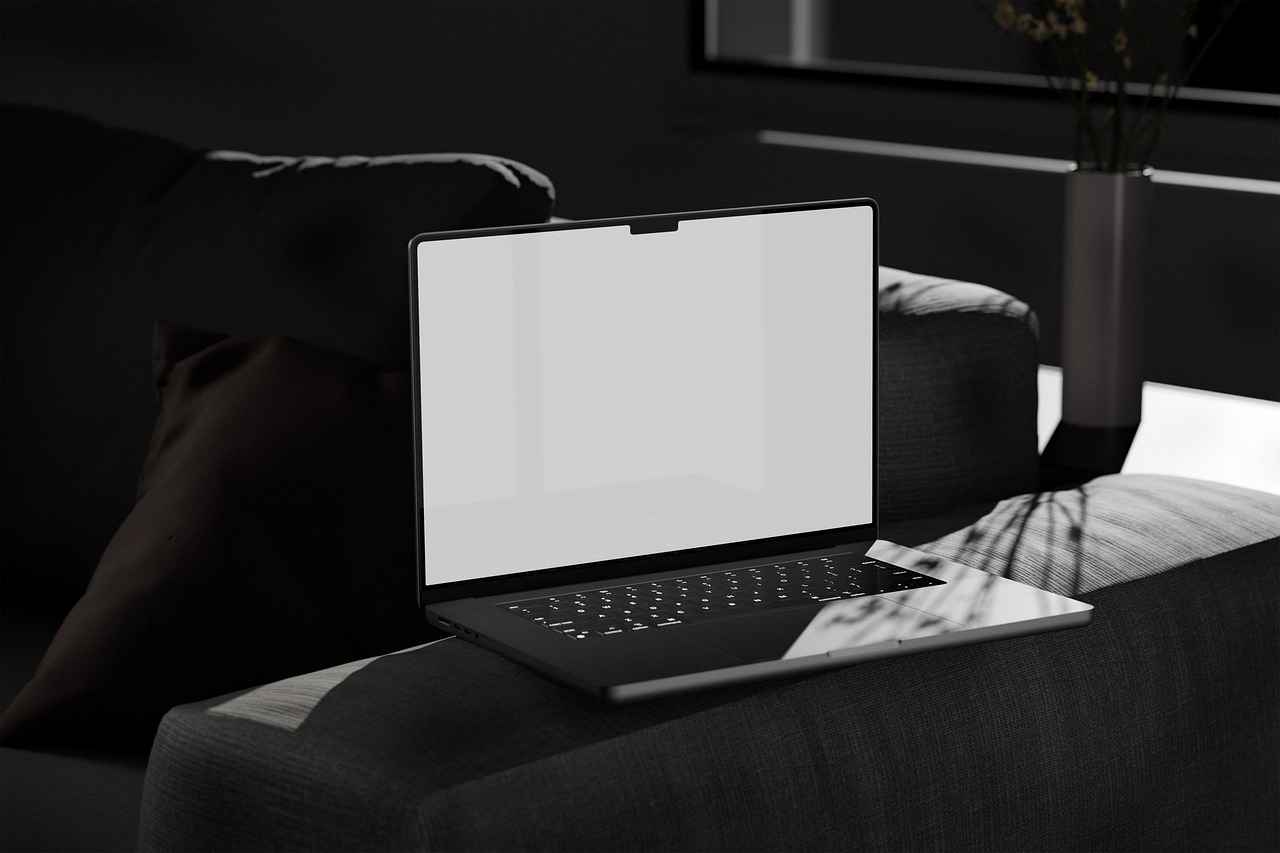
Where to Find Inspiration for Your Privacy Screen?
When it comes to designing a privacy screen for your open bedroom, finding the right inspiration is essential. The world of design offers a plethora of ideas that can help you create a unique and personalized space. Here are some effective ways to explore and gather inspiration for your privacy screen:
Design blogs are treasure troves of innovative ideas and trends. They often feature DIY projects, tutorials, and stunning visuals that can spark your creativity. Look for blogs that focus on interior design, home decor, or DIY projects. Many bloggers share their personal experiences and tips, making it easier for you to replicate their designs in your own space.
Home improvement websites provide practical advice and step-by-step guides on creating various home features, including privacy screens. These platforms often include how-to articles, videos, and forums where you can ask questions and get feedback. By browsing through these resources, you can learn about different materials and methods that suit your style and budget.
Social media platforms like Instagram, Pinterest, and Facebook are excellent for visual inspiration. On Instagram, you can follow hashtags related to home decor, such as #PrivacyScreen or #HomeDecorIdeas. Pinterest allows you to create boards where you can pin images of privacy screens you love, making it easy to organize your ideas. Facebook groups dedicated to home improvement or DIY projects can also offer valuable insights and inspiration from fellow enthusiasts.
Exploring online marketplaces like Amazon, Etsy, or Wayfair can give you a sense of what products are available for purchase. You can find ready-made privacy screens or materials that inspire your DIY project. Pay attention to customer reviews and photos to understand how these products look in real-life settings.
Visiting local home decor stores can provide a tactile experience that online browsing cannot. You can see, touch, and even feel different materials and designs in person. This firsthand experience can help you visualize how a particular style would fit into your bedroom. Don’t hesitate to ask store staff for recommendations or tips—they often have valuable insights.
Consider attending workshops or community classes focused on home improvement or DIY projects. These sessions often provide hands-on experience and the opportunity to learn from experts. You may also meet like-minded individuals who can share their own tips and inspiration, enriching your design journey.
Don’t overlook traditional media like home decor magazines and books. They often feature stunning photography and detailed articles about current trends and timeless designs. Subscribing to a few reputable magazines can keep you updated on the latest styles and provide a source of inspiration for your privacy screen.
By exploring these various sources, you can gather a wealth of ideas and inspiration for creating a privacy screen that reflects your personal style and meets your functional needs. Whether you prefer a sleek, modern look or a cozy, bohemian vibe, the right inspiration is out there waiting for you!
Frequently Asked Questions
- How do I choose the best location for my privacy screen?
Choosing the right spot is all about balance! Look for areas where you want to create intimacy without blocking natural light. Think of it like placing a cozy chair in a corner for a comfy reading nook.
- Can I really use plants as a privacy screen?
Absolutely! Tall plants can act like nature’s own wall, providing both aesthetics and privacy. Imagine a lush green curtain that not only looks great but also makes you feel more relaxed in your space.
- What materials do I need for a DIY privacy screen?
You don’t need much! Just grab some fabric, maybe a folding screen, or even some potted plants. It’s all about being resourceful and using what you already have at home!
- How can I hang fabric without using tools?
Easy-peasy! Use adhesive hooks, drape it over furniture, or even try tension rods. Think of it as creating a beautiful tapestry that doesn’t require a hammer or nails!
- What are some creative ways to decorate my privacy screen?
Get crafty! Hang fairy lights, attach artwork, or even weave in some personal mementos. It’s like giving your privacy screen a personality that reflects your unique style!



